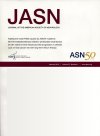Data-Driven Kidney Transplant Phenotyping as a Histology-Independent Framework for Biomarker Discovery
In transplant medicine, clinical decision making largely relies on histology of biopsy specimens. However, histology suffers from low specificity, sensitivity, and reproducibility, leading to suboptimal stratification of patients. We developed a histology-independent immune framework of kidney graft homeostasis and rejection.
We applied tailored RNA deconvolution for leukocyte enumeration and coregulated gene network analysis to published bulk human kidney transplant RNA transcriptomes as input for unsupervised, high-dimensional phenotype clustering. We used framework-based graft survival analysis to identify a biomarker that was subsequently characterized in independent transplant biopsy specimens.
We found seven immune phenotypes that confirm known rejection types and uncovered novel signatures. The molecular phenotypes allow for improved graft survival analysis compared with histology, and identify a high-risk group in nonrejecting transplants. Two fibrosis-related phenotypes with distinct immune features emerged with reduced graft survival. We identified lysyl oxidase-like 2 (LOXL2)–expressing peritubular CD68+ macrophages as a framework-derived biomarker of impaired allograft function. These cells precede graft fibrosis, as demonstrated in longitudinal biopsy specimens, and may be clinically useful as a biomarker for early fibrogenesis.
This study provides a comprehensive, data-driven atlas of human kidney transplant phenotypes and demonstrates its utility to identify novel clinical biomarkers.



